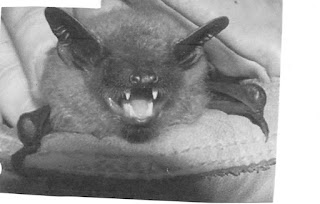What About That Black Cat?
A witch can have familiars, and cats are one of them. All the familiars have magic powers.
It may have started in Egypt, where they were first tamed to keep the grain storehouses free of mice. They soon worshiped a cat-head goddess named Pasht. They carved cat statues and made furniture and jewelry shaped like cats.
The ancient Greeks and Romans believed the goddess Hecate ruled over witches, wizards, and ghosts. The priestess was a cat they thought was once a woman.
Freya was a Norse goddess of beauty, love, marriage, and of the dead. After warriors were killed in battle, she was allowed to claim the souls of half of the slain by gathering them in a chariot drawn by cats.
The familiar cats in days of yore could be any color, but as time passed, it was decided the cats were black because, in the shadowy night, all cats were black. The cats were feared because they crept; their yellow eyes looked sinister, and they could see at night while humans couldn't.
Some people believed a witch could become a cat.
Some sayings developed, such as the following. Being honest as a cat when the cream is out of reach. Never let a cat into the same room with a corpse. It might be a demon and turn the dead soul into a vampire. A cat that sits with its back to the fire is raising a storm.
Cats could be a good omen, and these sayings developed: If a cat rubs against you, expect good luck. If it yawns, an opportunity awaits. A ship with a cat on board is never wrecked, for the cat acts as a countercharm.
OWLS
 Owls can be a familiar to the witches.
Owls can be a familiar to the witches.In ancient Rome, owls were thought to bring evil, while in Greece, the owl was a familiar of the Creek goddess of wisdom and, therefore, was sacred.
The Screech owls nest in hollow trees during the day and only come out at night and make a weird, trembling call and hollow whistle, frightening travelers.
I have never read this tale by the Brothers Grimm, and you may not have read it either, so I will post part of it here.
Jorinda and Joringel
Jorinda is the sister of Joringel, who is a boy. They walked too close to a witch's castle. An owl circles overhead, screeching. The boy, Joringel, is struck motionless and speechless. His sister Jorinda turns into a nightingale. The owl disappears into a thicket, and a bent old woman emerges. When she takes the nightingale away in a basket, the boy, Joringel, realizes that the old woman is a witch. To read the whole story, go to Grimm's Fairy Tales online.
Still, some people believe the owl's screech means death or disaster.
Bat
Bats are creatures of the night, which in itself makes them scary. Their heads are oddly shaped. Some bats's heads are shaped like tiny bulldogs. Other bats's heads are like miniature bears with long, pointed teeth. Their bodies can be two inches long, but their wingspan can be over one foot. They live in scary places such as caves, abandoned homes, empty barns, and deep in a forest. By day, they hang upside down with their wings wrapped around them like a witch's cloak. They fly quickly in the deepest dark of night. To the ancients, that meant they were evil.
Toad
During the witch hunts in Europe, most people lived on farms. There were toads in their gardens, under their porches, in the fields, and along the road.
Rocks were thrown at the toads as they were thought to be poisonous. If a dog or a human caught a toad, the catcher soon regretted it. Their eyes, nose, and mouth would burn or itch.
And a toad can change its size from minor to larger by absorbing water through its skin.
William Shakespeare wrote:
"Round about the cauldron go;
In the poisoned entrails throw.
Toad that under the cold stone,
Days and nights hast thirty-one
Swelter's venom sleeping got,
Boil thou first i' the charmed pot!"
Much of the above information is from Edna Barth's book Witches, Pumpkins, and Grinning Ghosts.
My next blog will be about sighting a "ghost" in the Maple Hill Cemetery in northeast Minneapolis, Minnesota. Stay tuned.








No comments:
Post a Comment